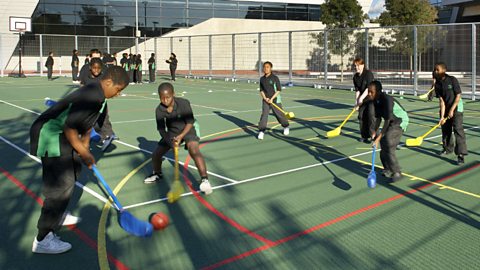Age, gender, ethnicity, religion and culture and sport
Age
Age affects participation in physical activity in a number of ways:
- Young children need to develop gross motor skillsLarge movements involving different parts of the body, such as head, arms, legs and trunk. from an early age to become confident movers. Those that do so tend to participate to a greater degree.
- Adolescents experience a growth spurt that changes their physical development. This affects how they acquire skills and how they feel, ie confidence, self-esteem and body image; it also influences the type of activity they may participate in, as intensive strength training is not recommended while bodies are still growing as it can damage the growth plate on the bone ends.
- Young people's participation is usually high during curriculum time as physical education (PE) is compulsory. It is lower for extracurricular sport, and it drops dramatically beyond school – out of school hours and when young people leave school. Overall, young people’s participation decreases from age 13.
- Young people also want to take part in a greater variety of sports and physical activities than in the past. This includes more fitness activities, individual activities and non-traditional games.
- According to Sport England, nearly 55% of 16-to-25-year-olds take part in at least one sport session a week, compared to only 32% of older adults (26 plus), so participation in sports tends to decrease with age.
- Older people may experience decreasing flexibility, strength and general fitness and find it harder to recover from injury. This affects their choice of activity and gentler, lower impact sports such as golf, bowls and cycling are popular with the older age group.

Gender
In the UK, 1.9 million fewer women than men take part in sport each week. There is a significant drop in girls' participation from age 11. By age 14, boys are twice as active as girls.
There are many reasons why some women rarely participate in sport and physical activity:
- discrimination - others/males/media devalue female sport and activity
- low self-esteem - awareness of image, lack of confidence, embarrassment
- lack of role models - few female role models for this age group
- lack of encouragement - from family, schools, peers
- friends/peer inactivity - others do not participate, devalue activity
- lack of opportunity - few activities for women/women only activities
- school PE negative influences - poor experiences, narrow opportunities in schools
- other interests - competing with other activities, pressures from other interests
- lack of media coverage of female sport/activities
- childcare issues/family commitments - looking after young children
- religion/culture
Participation in sport was once considered unsuitable and inappropriate for women, but these traditional arguments are now disregarded and women play most sports. Women are considered to be better than men at some ultra-endurance events and the gap between men's and women's achievements is closing fast.
Ethnicity
Over half of people in black and minority ethnic (BME) communities do no sport or physical activity.
On average, all BME groups have lower participation rates than the national average.
One of the main reasons why BME communities have lower rates of participation is the lack of BME role models involved in leading and organising sport. For example:
- only 5% of coaches are from BME communities
- only 7% of sports professionals (other than performers) are from BME communities
- people from BME communities are 50% less likely to be sports volunteers than the general population
Other reasons include racism and discrimination, stereotyping and lack of disposable income.
In some communities, the factors of ethnicity and gender combine to have an even greater effect on participation. For example, 92% of South Asian women do not meet the recommended levels of physical activity compared to 55% of all women.
Question
Which of the following factors is known to affect the participation in sport of people from BME communities?
A – People from BME communities dislike sport
B – People from BME communities have fewer role models in sport
C – People from BME communities do not have time to play sport
B – Fewer people from BME communities are involved in leading and organising sport so potential BME participants see fewer role models representing their communities.
Religion and culture
Some religions and cultures have laws or expectations which make it more difficult to participate in sport. These restrictions particularly affect women and are often to do with clothing. For example, a teenage girl might not be allowed to go swimming with her friends as wearing a bathing costume in public is not allowed in her culture or religion. Some performers wear head covering or full body covering when they participate, to stay within the laws of their religion.
Time of day may also affect participation, as many religions have specific times for rituals and worship.